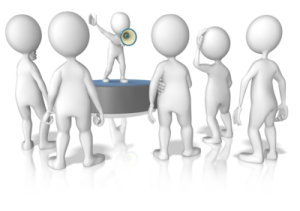I’ve just received an e-mail from a friend.
It said ‘Great, see you on Tuesday! Do you prefer to meet in your office or mine?’
It would be perfectly all right if this was not the reply to my mail that said: ‘Since I’ll be in your neighborhood, I’ll see you in your office on Tuesday!’
If we fail in basic things like this, I wonder how much of what we say really gets to the person who we are communicating with…
Studies say that in live communication (I mean face to face) the actual words only account for 7% of the meaning…
Another 25% is also verbal, things like tone of voice, rhythm, pitch, pauses, etc.
A whopping 2/3 is non-verbal communication!
I’ve always been fascinated by this topic and three years ago I joined Toastmasters to improve my communication skills.
It has been both a lab and a gym for me – a lab to experiment on different combinations of all the ingredients, and a gym to exercise each of the verbal and non-verbal ‘muscles’.
The evaluator’s feedback, complemented by the audience feedback and their reaction as I’m speaking, have given me valuable lessons.
The biggest mistake someone with a Trainer’s Certification can make is to assume they can communicate…
Sure, that can speak ‘at’ people, but how many really communicate? How much of what they say really sticks for longer than a moon cycle?
Is it enough if you really want to make a difference in people’s lives?
And what about communicating in writing?
How can we compete with the distractions the readers are subject to and make it interesting for them?
The first thing is to ‘talk’ to them and the second is to tell them a story…
Then play two different roles – the writer and the reader.
Don’t ‘tell’ them what you think they should read, ‘speak’ to them in their words, to their hearts, so that they feel you understand them. Only when they like and trust you will you be in a position to help them and really make a difference in their lives.
Remember,
‘People won’t care how much you know until they know how much you care.’ Teddy Roosevelt
